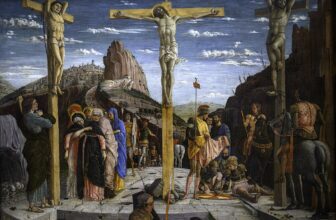
What happen to Marie Antoinette children?
A detailed story and discussion about the fate of Marie Antoinette’s children, delving into their lives and the tragic circumstances surrounding them:
Marie Antoinette, the last Queen of France before the French Revolution, had four children with King Louis XVI: Marie Thérèse Charlotte, Louis Joseph, Louis Charles, and Sophie Hélène Béatrix. Their lives were marked by privilege and grandeur but ultimately overshadowed by the upheaval of the French Revolution. This story explores their individual lives, the hardships they endured, and the legacy they left behind.
Marie Thérèse Charlotte (1778–1851)
Marie Thérèse Charlotte, known as “Madame Royale,” was the eldest child of Marie Antoinette and Louis XVI. Born into luxury at the Palace of Versailles, she was groomed as a royal from a young age. Despite her privileged upbringing, Marie Thérèse’s life took a tragic turn with the onset of the French Revolution.
After the royal family was arrested during the fall of the monarchy in 1792, Marie Thérèse endured imprisonment at the Temple Tower in Paris. Unlike her younger siblings, she was the only one to survive the Revolution. She witnessed the execution of her father in January 1793 and, later that year, the brutal demise of her mother. These traumatic events left an indelible mark on her.
In December 1795, after three years of isolation, Marie Thérèse was released as part of a prisoner exchange and sent to Austria. Her survival was bittersweet. She spent the rest of her life in exile, marrying her cousin Louis Antoine, Duke of Angoulême, and becoming a symbolic figure for French royalists. Despite her suffering, Marie Thérèse displayed resilience and dignity, dedicating herself to preserving her family’s legacy.
Louis Joseph (1781–1789)
Louis Joseph Xavier François, the second child and the Dauphin of France, was the heir to the throne after Louis XVI. As a young boy, Louis Joseph was described as intelligent and endearing, but his health was fragile from an early age. He suffered from tuberculosis, which plagued him throughout his short life.
The strain of his illness was a source of deep sorrow for Marie Antoinette, who devoted herself to his care. Despite the best medical attention available, Louis Joseph’s health deteriorated, and he died at the age of seven in 1789, just months before the storming of the Bastille. His death was a personal tragedy for his family, but it also had significant political implications. His passing left his younger brother, Louis Charles, as the new Dauphin, thrusting the boy into a position of prominence during a time of growing unrest.
Louis Charles (1785–1795)
Louis Charles, known as “Louis XVII” by royalists, had perhaps the most tragic fate of all Marie Antoinette’s children. After the death of his elder brother, he became the Dauphin at the age of four. His early years were spent in the opulent surroundings of Versailles, but his life took a dramatic and horrifying turn during the Revolution.
When the royal family was imprisoned in the Temple Tower, Louis Charles was separated from his mother and sister in 1793. At just eight years old, he was subjected to inhumane treatment, including isolation, neglect, and abuse. Revolutionary authorities sought to break his spirit and use him as a pawn against the monarchy. They forced him to sign a false confession accusing his mother of immoral acts, a traumatic ordeal for a young boy.
The harsh conditions of his imprisonment took a severe toll on Louis Charles. He became malnourished and fell ill, ultimately succumbing to tuberculosis in June 1795 at the age of ten. His death remains shrouded in mystery, as rumors and conspiracy theories persisted that he had escaped and been replaced by another child. However, modern DNA analysis has confirmed that the remains attributed to him are genuine.
Sophie Hélène Béatrix (1786–1787)
The youngest of Marie Antoinette’s children, Sophie Hélène Béatrix, was born in July 1786. She was a delicate child from birth and suffered from a range of health issues. Her life was tragically brief, lasting less than a year. Sophie died in June 1787, likely from tuberculosis or other complications. Her death was another blow to the royal family, who had already endured the loss of Louis Joseph.
The French Revolution
The French Revolution fundamentally altered the course of history, not just for the royal family but for France and Europe as a whole. For Marie Antoinette’s children, the Revolution was an unstoppable force that swept away the privileges of their birthright and replaced them with unimaginable suffering.
Marie Antoinette herself became a target of public outrage, caricatured as the epitome of royal excess. The slogan “Let them eat cake,” falsely attributed to her, symbolized the resentment of the French people toward the monarchy. As the Revolution gained momentum, the royal family became prisoners of the state, and the children were subjected to the same vitriol directed at their parents.
Marie Antoinette’s children symbolize the human cost of political upheaval. Their lives, filled with both luxury and tragedy, offer a poignant glimpse into the complexities of history.
- Marie Thérèse Charlotte’s Survival and Legacy
Marie Thérèse’s survival is a testament to resilience in the face of adversity. She witnessed the fall of her family, endured imprisonment, and bore the weight of being the last surviving member of her immediate family. Her life raises questions about the emotional toll of such experiences and the role of memory and identity in exile. - Louis Charles and the Myth of Louis XVII
The tragic story of Louis Charles remains a focal point for royalist sentiment. His death in captivity is a stark reminder of the brutality of the Revolution, particularly toward children. The rumors of his survival highlight the human need for hope and the desire to rewrite tragic narratives. - The Impact of Early Losses
The deaths of Louis Joseph and Sophie Hélène Béatrix illustrate the fragility of life, even for those born into privilege. Their passing also underscores the emotional vulnerability of the royal family, often lost in discussions of their political and symbolic roles. - The Role of Public Perception
The vilification of Marie Antoinette and her children highlights the power of propaganda in shaping historical events. Their fate serves as a cautionary tale about the dangers of dehumanizing political adversaries.
The story of Marie Antoinette’s children is a microcosm of the broader turmoil of the French Revolution. It is a tale of innocence caught in the crossfire of ideological battles, where personal tragedies became symbols of a nation’s struggle for identity. Their lives remind us of the enduring impact of history on individual lives and the human dimension of political change.
Though their time on earth was short and fraught with suffering, Marie Antoinette’s children left an indelible mark on history, serving as both victims and witnesses to one of the most transformative periods in human history.




